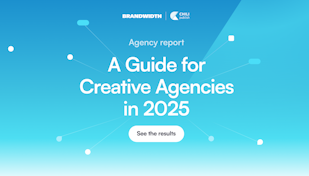Why the future of visuals is smart, modular, and dynamic

Producing visuals comes with its own set of challenges. Traditionally, this happens in a 5-step process: brief, create, review, approve, and modify for different uses. Next to requiring a lot of time to complete, the many human factors make the process vulnerable to errors. Why not work towards simpler and more automated ways of building visuals and graphics for multiple channels?
Smart Templates have constraints and intelligence on board, so users can self-service and create the visuals they need with full design integrity and brand governance. Connecting to data sources ensures the content is always correct, and advanced features let template designers automate the creation of many different required variations.
It’s the end of static visuals as you know them
We firmly believe the future of visuals for marketing is modular; designers will create smart templates that can be repurposed and even combined for many uses. Smart Templates can become the building blocks of a brand’s visual communication.
For example: an online banner is always an online banner. It has a recurring set of elements, likely including a logo, an image, a few text lines, and a call-to-action. Once it becomes clear that online banners’ components are consistent, designers can build a Smart Template that contains those elements and embed the brand identity guidelines. Those guidelines dictate the elements’ position and how they should look (font, size, colors, and any other characteristics that define the brand’s expression).
Once you have Smart Templates in place, you can generate many different visuals on the fly, with instant results. Dynamic Layouts -with their relative and calculated positioning- took that concept further. Smart Templates became more flexible and easy to build than ever before. Designers only need to set up a few aspect ratios, and CHILI publisher interpolates the in-betweens as required. Smart Templates can then transform automatically based on the content that goes in them.
An ad, for example, consists of a number of components, which may or may not be present in every variant: background images, colored backgrounds, headline, tag line, call-to-action, product shots, QR code, and many more. Depending on the campaign and communication channel, they will be part of the visual. Marketers simply indicate what they need for which channel, and the ad auto-generates.
So here’s the thing with images
Images, however, continued to pose a challenge. Correct positioning of an image’s subject and specific point of interest remained subject to human interpretation. Designers still had to ensure an image’s subject featured prominently and correctly in the different design variants, which meant a lot of manual work.
We already included multiple ways of cropping in our user interface because we don’t offer a single user experience and a single user interface. CHILI publisher’s user interface is highly customizable and allows customers to offer the cropping method that makes the most sense in their application. But cropping remained a mostly manual activity.
Some customers chose to solve this problem by preparing lots of images, each cropped for a specific aspect ratio and size. And even though the number of required images quickly runs into the thousands, you would be surprised in how many cases this remains the standard method for handling crops.
How we prepare images for the visual future?
It should come as no surprise that we wanted to fix that. So we talked to customers struggling with images, and we did a lot of research as to what was the best way to create a way for images to crop automatically. The result of that is our new Smart Crop.
Smart Crop automates the one thing that was considered virtually impossible to automate. It goes beyond setting up layout-specific manual crops for each variant. It takes cropping to the next level.
There had been attempts at this -often by major software vendors- in the past, but they were too basic. Software would crop an image to a frame without taking other design elements into account. Inevitably, it would lead to problems and unexpected failures. **So we looked beyond the image frame and the image size. We introduced the concepts of subject and focal point. **
In this example:
the players are the subject,
and the focal point is the player in blue’s foot.
In the vertical banner, part of the subject gets cropped out to ensure the point of interest remains visible in the final crop. For each aspect ratio, template designers can now define where an image’s subject needs to be in the design for each aspect ratio, taking into account other design elements and overlaps.
Put smart info to smarter use
Organizations often use DAM systems to house extensive image collections, along with their metadata. That metadata may include an image’s subject and point of interest XY locations.
In fact, many DAMs have technology on board to automatically recognize subjects in images, calculate their positions, and store those as metadata. CHILI publisher can use that information to enable automatic cropping. Designers can then define where the subjects and focal points should be in the Smart Template, and CHILI publisher can crop images automatically, with full control over the result.
The designs in the example may look like a designer handled them, but every variant was generated without any human intervention. All variants were the result of a single click.
Smart crop eliminates the manual process of looking at an image, deciding what is most important in that image, and then positioning it in the image frame. It can automatically place subjects and more specific points of interest optimally. The resulting crop of the picture looks perfect in the composition and looks like a specialist designer painstakingly created it by hand. But it was all done automatically.
Vizualizing content, optimizing processes, maximizing brand visibility
Make no mistake about it, designers and template creators still handle governance. Only they no longer have to intervene -or even check- every individual variant. The Smart Template contains the ground rules, like brand identity guidelines and ideal locations for image subjects and focal points.
With this Smart Template in place, two things happen:
- first, anyone can create correct visuals and assets for print, digital, and social media.
- Second, it becomes possible to generate hundreds of variants automatically, freeing up a lot of vital resources.
The combination of Smart Templates, Dynamic Layouts, and Smart Crop tie many new and existing features together into a go-to-market powerhouse.
- No longer do marketing departments have to spend days or weeks preparing assets for a launch, risking to be less relevant by the time they are ready.
- No longer do companies need to limit their reach because of bandwidth or available resources.
It is possible to generate generous amounts of assets for each channel with minimal time invested. It is a winning combination that makes your brand more present in more channels simultaneously and makes it possible to react to current events.
Design stops being the bottleneck, and brands can ensure maximum visibility in many channels at once.
Scaling for the clouds
Needless to say, this setup called for some smart architecture choices. We wanted to make these features available at scale from day one, for brands of any size.
That’s why we teamed up with Microsoft Azure, not just because of its stability, speed, or global availability, but also because Azure’s scalable architecture lets us ramp up quickly to support increased activity. It also allows us to become more agile: we now have more analytical information and insights, which will help us further improve CHILI publisher and provide better support.
Frankly, I could not be more excited. We have pushed the technological envelope since our inception, but we’re in uncharted territory now. The possibilities are endless.
Ward De Langhe
Chief Product Officer - CHILI publish
Product,
Marketing,
Company
Ward De Langhe
Dec 15, 2020


